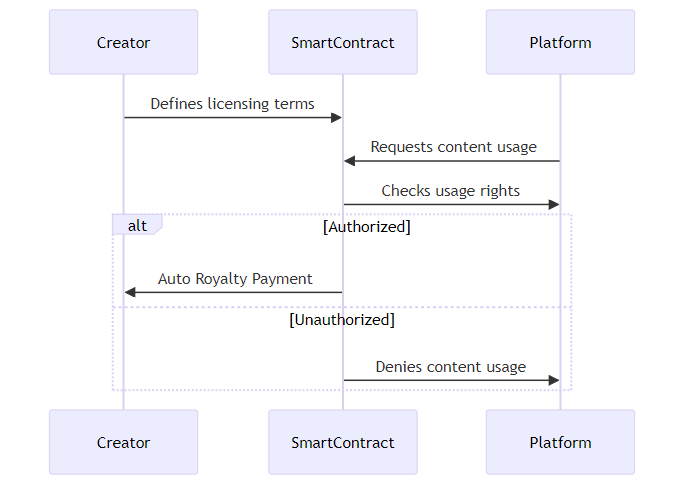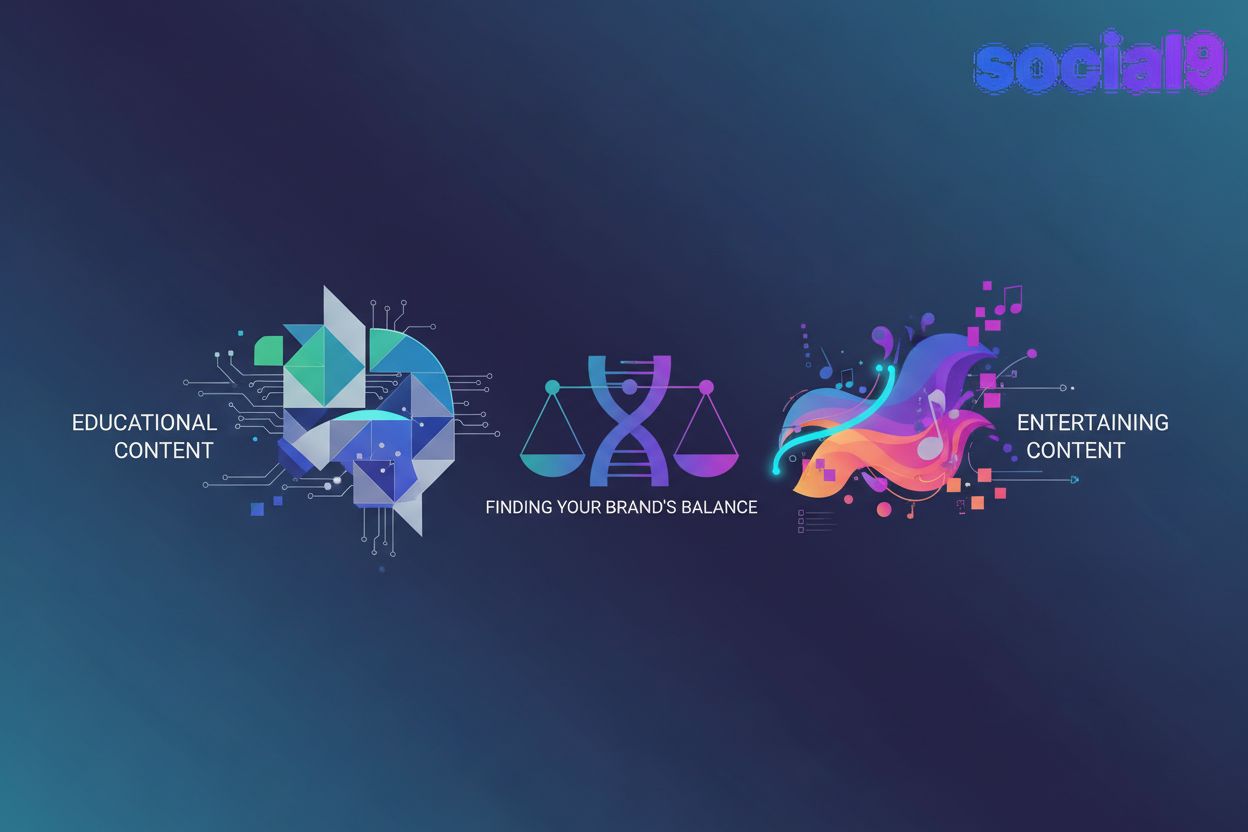Securing Your Content Kingdom: How Blockchain Provenance Protects Creators in the Age of AI
Securing Your Content Kingdom: How Blockchain Provenance Protects Creators in the Age of Ai
The Content Crisis: Why Provenance Matters Now More Than Ever
Ai's ability to churn out content raises a critical question: how do we know what's real anymore? (What's Real Anymore? How Ai Is Making Us Mistrust Everything) The rise of ai-generated content makes provenance—the origin and history of a piece of content—more vital than ever.
Ai tools democratize content creation, but they also blur the lines of originality. It becomes difficult to discern between human-created and ai-generated material.
Deepfakes and synthetic media pose a significant threat. ([PDF] Increasing Threat of DeepFake Identities - Homeland Security) These can damage brand reputation and erode creator trust, as manipulated content spreads rapidly.
The lack of clear provenance exacerbates the problem. Without a way to verify where content comes from, misinformation and copyright infringement thrive.
Copyright infringement runs rampant with ai-generated content. Unauthorized use becomes easier, making it harder for creators to protect their work.
Proving ownership and enforcing rights becomes a struggle. Creators need tools to assert their claims in the face of ai-driven duplication.
Monetization opportunities are undermined by fake or stolen content. The value of original work diminishes as inauthentic copies flood the market.
Social media algorithms inadvertently promote inauthentic content. The systems designed to engage users can also amplify misleading information.
The speed and scale of social media exacerbate misinformation. Copyright violations spread rapidly, overwhelming existing moderation efforts.
Platforms struggle to implement effective content verification systems. The volume of content makes manual moderation nearly impossible, requiring automated solutions.
As the volume of fake content grows, content creators are looking for solutions, such as blockchain, to protect their work. The next section will explore how blockchain technology can secure content provenance.
Blockchain to the Rescue: Understanding Content Provenance
Blockchain technology offers a promising solution to the content provenance problem, but how does it actually work? Let's break down the basics of blockchain and how it establishes trust in digital content.
At its core, a blockchain is a distributed, immutable ledger. Think of it as a shared digital record book that multiple people can access simultaneously.
- It's distributed because the ledger isn't stored in one central location. Instead, copies exist on many computers across a network.
- It's immutable because once a transaction is recorded, it cannot be altered or deleted. This ensures a transparent and permanent history.
Here's a quick rundown of key blockchain concepts:
- Blocks: Data is grouped into blocks, like pages in a ledger. Each block contains information about recent transactions.
- Chains: Blocks are linked together in a chronological order, forming a chain. Each new block contains a cryptographic hash of the previous block, which ensures that the blocks are connected.
- Hashing: Cryptographic hashes are unique "fingerprints" for each block. If the information in a block changes, the hash also changes, making tampering evident. This is crucial for immutability because each block contains the hash of the previous block. If someone tries to alter data in an earlier block, its hash will change. This altered hash won't match the hash stored in the next block, effectively breaking the chain and making the tampering immediately obvious to everyone on the network.
- Consensus Mechanisms: These are the protocols that blockchain networks use to validate new transaction blocks.

A key feature of blockchain is its decentralized nature. Because no single entity controls the blockchain, it's more resistant to censorship and single points of failure. This decentralization enhances transparency and security, making it an ideal tool for establishing content provenance.
Content provenance is all about establishing a clear and verifiable record of a piece of content's creation and ownership. In the context of ai-generated content, this becomes particularly important.
- Blockchain provides a tamper-proof audit trail of modifications and transfers. This makes it possible to track not just where a piece of content originated, but also every change it has undergone since its creation.
- By using blockchain, we establish a clear and verifiable record of a content's creation and ownership.
- This audit trail builds trust and accountability in the content ecosystem.
For content creators, blockchain-based provenance offers several key advantages:
- Enhanced copyright protection: Blockchain provides a time-stamped, immutable record of content creation, making it easier to prove ownership and enforce intellectual property rights.
- Improved transparency and trust: With a clear record of provenance, creators can build stronger relationships with their audiences and collaborators. Audiences can be confident that the content they're consuming is authentic.
- New monetization opportunities: Verifiable authenticity can unlock new monetization opportunities. For instance, creators could sell authenticated copies of their work as non-fungible tokens (NFTs).
Now that we've explored the benefits, let's delve into the practical steps of securing content provenance using blockchain technology.
How Blockchain Provenance Works in Practice
Blockchain technology offers a revolutionary approach to securing content provenance. But how does this technology work in practice to protect content creators in the age of ai? Let's explore the key steps and practical examples of implementing blockchain for content provenance.
The first step involves registering your content on the blockchain. This process typically starts with creating a unique identifier, often a hash, for your content. Think of a hash as a digital fingerprint.
- This hash acts as a unique, fixed-size identifier for your content. The hash is generated using a cryptographic algorithm.
- Once generated, the hash is registered on the blockchain, creating an immutable record of your content's existence.
Next, you add metadata to this blockchain record. This metadata provides additional information about the content. This can include details such as:
- Author.
- Creation date.
- License information.
- Ai tool used (if applicable).
One way to store content and link it to a blockchain record is by using the InterPlanetary File System (IPFS). IPFS is a decentralized storage network. It allows you to store your content and obtain a content identifier (CID), which can then be recorded on the blockchain.
Smart contracts can automate licensing agreements and royalty payments. These self-executing contracts are written directly into the blockchain. They define the terms of usage rights, distribution terms, and payment schedules in code.
- This automation ensures fair compensation for creators. It also prevents unauthorized use of their content.
- For instance, a photographer can use a smart contract to automatically receive royalties each time their image is used in an advertisement. The terms of use, such as price and display duration, are encoded in the smart contract, ensuring that the photographer is fairly compensated.

Blockchain allows users to verify the authenticity and origin of content. By checking the blockchain record, one can confirm authorship and prevent tampering. This involves using cryptographic signatures to confirm authorship.
- When content is created, the author generates a digital signature using their private key. This signature is then stored on the blockchain along with the content's hash and metadata.
- Anyone can verify the authenticity of the content by using the author's public key to check the digital signature. If the signature is valid, it confirms that the content was indeed created by the claimed author and has not been altered since its creation.
Integrating provenance information into social media platforms and content marketplaces is another crucial step. This can help users make informed decisions about the content they consume. It also builds trust in the digital ecosystem.
Now that we've explored how blockchain provenance works in practice, let's look at some tools available for content creators.
Getting Started with Blockchain Provenance: A Creator's Guide
Thinking about implementing blockchain provenance for your content? It might sound complicated, but it's becoming more accessible. Here's a breakdown of how you can start, what to expect, and some practical steps.
1. Understand the Basics (You're Doing That Now!)
Before diving in, get a grasp of what blockchain is and why provenance matters. You've already covered a lot of this in the earlier sections, so you're ahead of the game!
2. Choose Your Blockchain Platform
This is a big one. As we touched on earlier, you'll need to decide between public and private blockchains.
- Public Blockchains (e.g., Ethereum, Polygon):
- Pros: Highly decentralized, transparent, large communities.
- Cons: Can have higher transaction fees (gas fees), slower transaction times during peak usage, and potential scalability issues.
- Good for: Creators who want maximum transparency and don't mind variable costs.
- Private/Permissioned Blockchains (e.g., Hyperledger Fabric):
- Pros: Faster transactions, lower or no gas fees, more control over data and privacy.
- Cons: Less decentralized, requires permission to join, potentially less transparent to the public.
- Good for: Businesses or groups of creators who need more control and predictable costs.
Actionable Step: Research platforms like Ethereum (and its layer-2 solutions like Polygon for lower fees), Solana, or Flow. For private solutions, look into Hyperledger.
3. Select Your Tools and Services
You don't necessarily need to build your own blockchain. Many platforms and services simplify the process:
- Content Registration Services: Some platforms specialize in helping creators register their work on the blockchain. They often handle the hashing and metadata registration for you.
- IPFS Pinning Services: If you're using IPFS for storage, you'll need a pinning service to ensure your files remain accessible. Services like Pinata or Filebase can help.
- NFT Marketplaces: If you plan to sell authenticated digital assets, marketplaces like OpenSea, Rarible, or Foundation are where you'll list them.
- Smart Contract Development: If you need custom licensing or royalty agreements, you might need to hire a smart contract developer or use no-code smart contract builders.
Actionable Step: Explore services like Manifold Studio (for creating NFTs without code), Ceramic Network (for decentralized identity and data), or Arweave (for permanent storage).
4. Understand the Costs
There's an initial investment, but it's not always prohibitive:
- Gas Fees: On public blockchains like Ethereum, you pay "gas fees" for transactions (registering, minting NFTs, etc.). These vary greatly depending on network congestion. Layer-2 solutions significantly reduce these.
- Storage Costs: Storing large files on decentralized storage like IPFS might incur small fees, especially if you use a pinning service.
- Platform Fees: Marketplaces and registration services will typically take a percentage of sales or charge a subscription/listing fee.
- Development Costs: If you need custom solutions, hiring developers will be the most significant expense.
Actionable Step: Budget for gas fees by monitoring network activity and considering transactions during off-peak hours or on less congested blockchains.
5. The Learning Curve
It takes time to get comfortable. Start small, experiment, and don't be afraid to ask for help from online communities. Many platforms offer tutorials and support.
By taking these steps, you can begin to leverage blockchain provenance to protect your creative work and build a more secure digital future.
Choosing the Right Blockchain Solution for Your Needs
Choosing the right blockchain solution for your content provenance needs is like selecting the perfect lock for your treasure chest. You want something secure, reliable, and tailored to your specific situation.
The first big decision is whether to use a public or private blockchain, because each has its own set of trade-offs. Public blockchains, like Ethereum, offer transparency and accessibility, but they can be more expensive due to transaction fees. Private blockchains provide greater control and privacy, but require permissioned access, which might limit their reach.
Here's a breakdown of the key considerations:
- Security: Public blockchains generally have stronger security due to their decentralized nature and larger number of participants. However, private blockchains can implement custom security measures tailored to their specific needs.
- Scalability: Private blockchains often have better scalability because they have fewer participants and can use more efficient consensus mechanisms. Public blockchains can sometimes struggle with high transaction volumes, leading to slower confirmation times.
- Cost: Public blockchains can have higher transaction fees, especially during periods of high network activity. These are known as "gas fees" and can fluctuate wildly. Private blockchains typically have lower or predictable fees.
- Transparency: Public blockchains are transparent, meaning anyone can view the transaction history. Private blockchains offer greater privacy, as access to the transaction history is restricted to authorized participants.
Once you've decided on a public or private blockchain, you'll need to choose a specific platform. Ethereum is a popular choice for public blockchains, while Hyperledger Fabric is a well-regarded option for private blockchains.
Consider these factors when evaluating platforms:
- Features: Does the platform offer the features you need for content provenance, such as smart contracts and metadata storage?
- Costs: What are the transaction fees, storage costs, and development costs associated with the platform?
- Ease of Use: How easy is it to develop and deploy applications on the platform?
- Integration: Does the platform integrate with your existing content creation and distribution workflows?
Implementing a blockchain solution for content provenance involves several technical and legal considerations. You will need to understand gas fees (the cost to process transactions on a blockchain), transaction times (how long it takes for a transaction to be confirmed), and scalability limitations (how many transactions a network can handle). Addressing data storage costs and privacy concerns is also essential.
Ensuring compliance with relevant regulations and legal frameworks is another important consideration. This can include data protection laws like GDPR or specific intellectual property regulations in your region.
Selecting the right blockchain solution requires careful evaluation of your specific needs and priorities.
Social9: Elevate Your Social Media Game with Ai and Secure Content Provenance
Ready to supercharge your social media presence? In today's fast-paced digital landscape, standing out requires a blend of creativity and cutting-edge technology. Social9 offers a suite of ai-powered tools designed to help you create engaging content and secure your intellectual property with blockchain provenance.
Social9 harnesses the power of artificial intelligence to streamline your content creation process. These features empower you to create compelling content that resonates with your audience.
- Generate high-quality, engaging posts, captions, and hashtags with Social9's ai-powered tools. This means more time focusing on strategy and audience interaction.
- Save time and effort while maintaining a consistent brand voice and tone. The ai adapts to your style, ensuring all your content aligns with your brand identity.
- Access a library of content templates designed for various social media platforms. These templates provide a starting point, helping you overcome writer's block and maintain a steady stream of content.
Social9 goes beyond content creation by offering tools to protect your valuable work. By integrating blockchain provenance, you can establish clear ownership and authenticity for your content.
- Learn how Social9 can help you secure your ai-generated content by integrating blockchain provenance. This ensures your creations are protected from unauthorized use.
- Establish a verifiable record of your content's origin and ownership, creating a tamper-proof audit trail. This record provides evidence of your intellectual property rights.
- Protect your intellectual property and build trust with your audience. Knowing your content is authentic enhances your brand's credibility.
With Social9, you can elevate your social media game by combining the best of ai and blockchain. Social9 helps you create engaging social media content with ai-powered tools, generating posts, captions, and hashtags that drive engagement.
- Social9 offers AI-Powered Generation, Smart Captions, Hashtag Suggestions, Content Templates, and 24/7 Support. These features provide a comprehensive solution for content creators.
- The 24/7 Support is available via live chat and email, ensuring you can get help whenever you need it, whether it's a quick question about a feature or assistance with your account.
- Elevate your social media strategy with the combined power of ai and secure content provenance.
Ready to take your social media to the next level? Visit Social9 today!
Real-World Examples: Creators Using Blockchain for Provenance
Is blockchain provenance just a theoretical concept, or are creators using it to protect their work right now? The good news is that several real-world examples demonstrate the practical application of this technology.
How can photographers effectively protect their images online? Blockchain offers a way.
- Photographers can register their images on a blockchain, creating a time-stamped, immutable record of ownership. This helps prevent copyright infringement, because it establishes clear proof of when the image was created and by whom.
- By tracking usage through blockchain, photographers ensure proper attribution and can monitor where their images appear online. They can also use blockchain to issue licenses and track compliance.
- Verifiable authenticity opens new monetization avenues, such as selling authenticated copies or licensing images as NFTs, which creates new revenue streams.
Musicians face challenges in managing licensing and royalty payments. Blockchain offers a solution by creating a transparent and equitable music ecosystem.
- Musicians can use smart contracts to automate royalty distribution, ensuring fair compensation for their work. These contracts define usage rights, distribution terms, and payment schedules in code.
- Blockchain’s transparent ledger helps track music usage across various platforms. This ensures artists receive royalties for every play, download, or stream.
- Artists gain greater control over their intellectual property, empowering them to manage and monetize their music independently.
Ai's role in content creation raises questions about transparency and credibility. Writers can use blockchain to document ai's involvement in their work.
- By registering articles on a blockchain, writers can record the ai tools used in the writing process. This maintains transparency with readers.
- Blockchain ensures proper attribution for both human and ai contributions. This builds trust and credibility in the content creation process.
- Writers can create a verifiable record of their work, ensuring that their contributions are accurately represented and protected.
These examples illustrate how blockchain provenance can be used across various creative fields. It's a tool for protecting intellectual property and fostering trust in the digital age.
The Future of Content Creation: A Blockchain-Secured Ecosystem
The future of content creation lies at the intersection of ai and blockchain, creating a secure and innovative ecosystem. How can these technologies work together to protect creators and ensure authenticity?
Ai can enhance blockchain-based provenance systems through automated content verification, ensuring authenticity and originality.
Blockchain can provide transparency and accountability for ai algorithms, tracking their use and modifications to content.
By combining ai and blockchain, a symbiotic relationship emerges that fosters trust and protects intellectual property.
NFTs can represent ownership of digital content, enabling new monetization models and establishing unique digital collectibles.
Creators can connect directly with their fans and build communities around their authenticated work, fostering stronger engagement.
This technology empowers content creators to control and monetize their work in innovative ways.
"Now, in the hyper-connected and ever evolving world, transparency is the new power," - Benjamin Herzberg, Program Lead, Private Sector Engagement for Good Governance at the World Bank Institute
Content creators can thrive in the age of ai by proactively adopting blockchain provenance and NFTs. By embracing these innovative solutions, a future of trust and authenticity will emerge.





